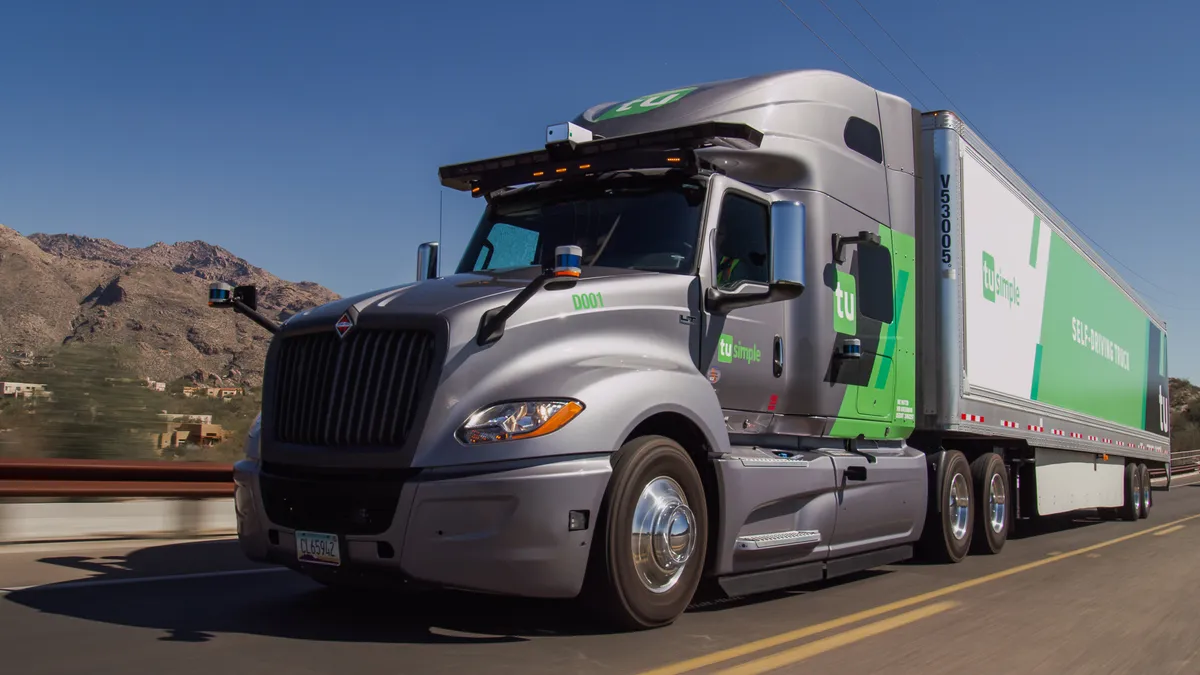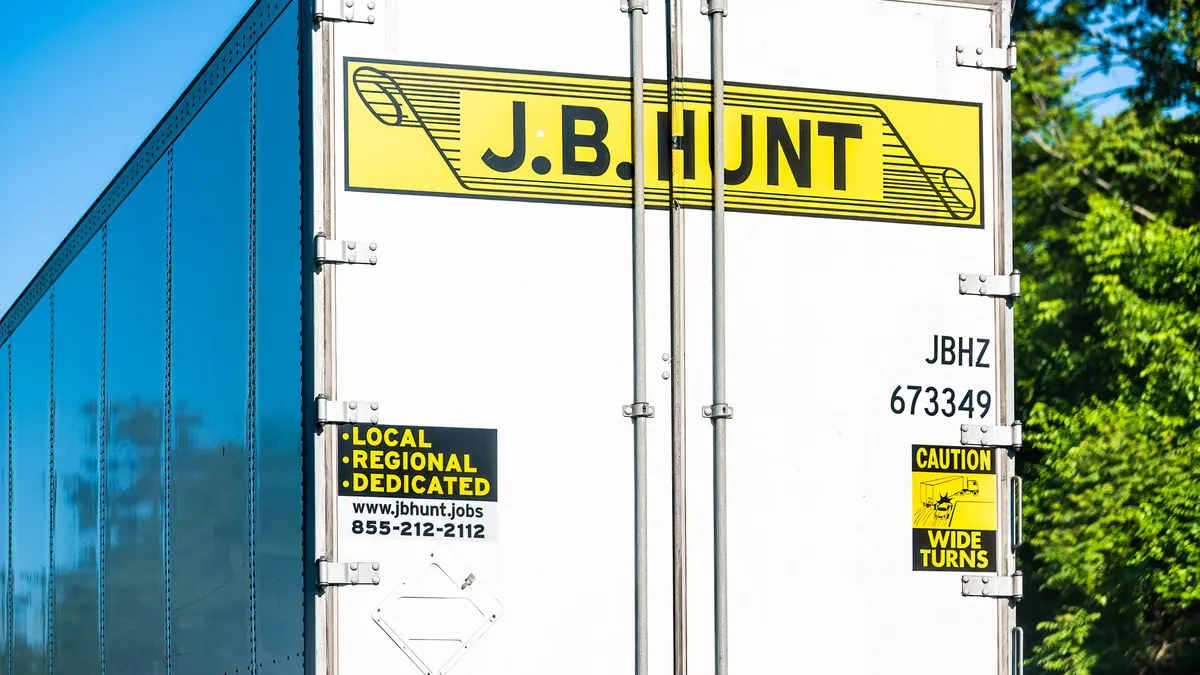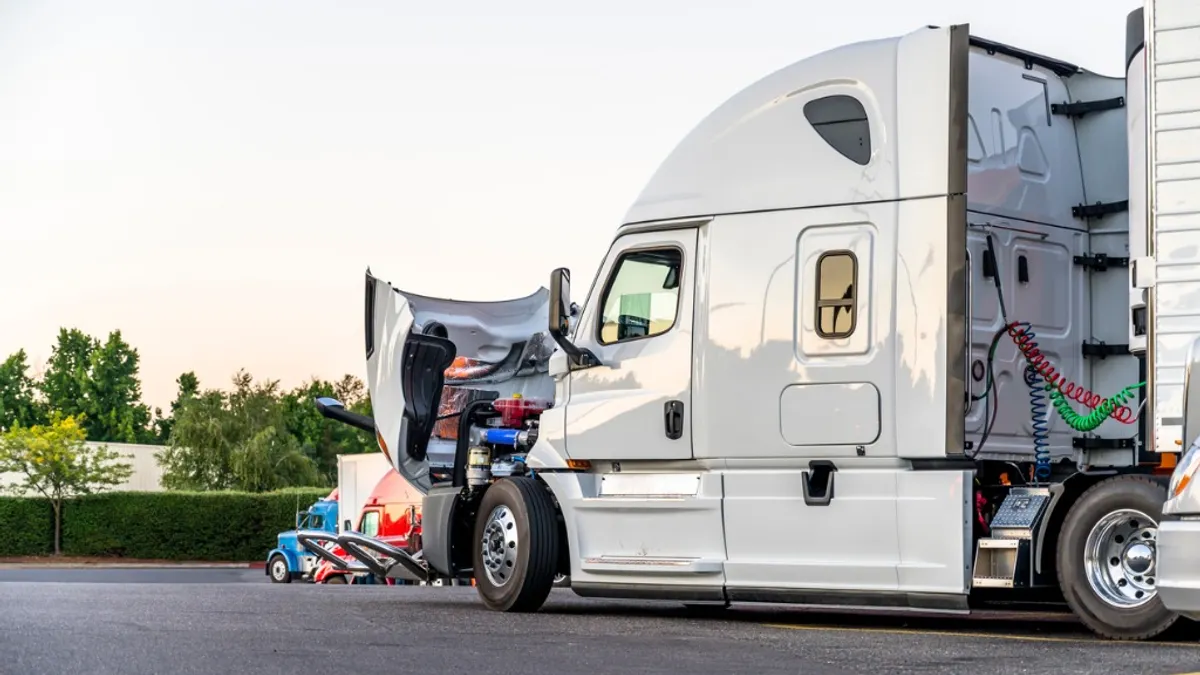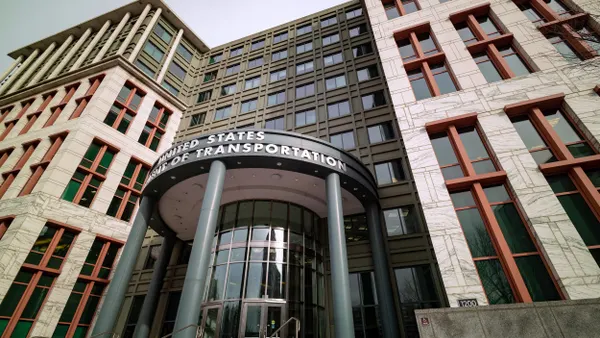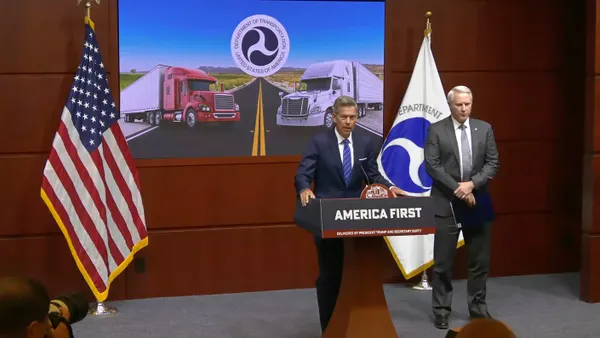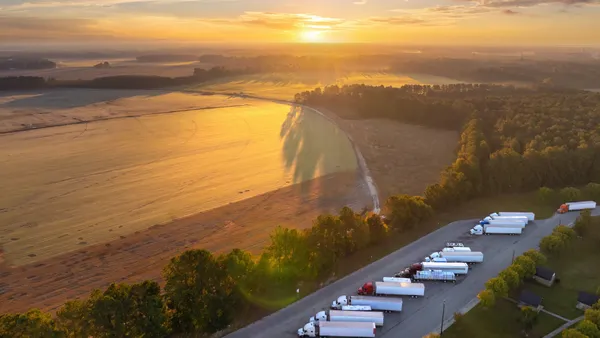Dive Brief:
- Once autonomous trucks overcome the hurdles of icy weather and congestion, robotic tractors could be used to fill in for drivers in up to 94% of long-haul hours, according to a new report from researchers at the University of Michigan and Carnegie Mellon University.
- Automation won't happen immediately, or even in all regions at once, the researchers found, noting that most automated trucking now is happening in the Sunbelt, from Florida through Texas to Arizona. Since government regulators are at first likely to keep automated trucking to stable lanes with predictable weather, only about 10% of driver hours would be affected, according to study co-author Parth Vaishnav, assistant professor at the University of Michigan's School for Environment and Sustainability.
- Automation is a hot topic among independent owner-operators, who see robotic tractors as a threat to their livelihood as drivers. But big fleets struggling with high turnover and recruitment troubles see L4 autonomy as the future of long-haul trucking.
Dive Insight:
Even as the debate over automation continues inside the trucking sector, the technology is already being deployed along dozens of highly trafficked lanes in the South and Southwest. The regions are easier on the robotic eyes, which have a harder time recognizing blowing leaves, snow and ice — what the researchers called "rough weather."
Automated truck companies such as TuSimple and Waymo are also not generally targeting denser lanes in urban or suburban areas. Hyundai, which is testing its own automated tractor, has told trucking officials at trade shows the truck can be taken over by a human pilot at night, or if the truck needs to go down side streets.
Big, wide-open states with lots of sun are targeted first. Despite the polar vortex hitting Texas hard in early 2021, the Lone Star State has attracted autonomous trucking company Waymo, a Google subsidiary. Waymo jumped from autonomous cars to testing Class 8 tractors in 2017.
In 2020, Waymo announced a partnership with Daimler Trucks North America, the continent's largest truck OEM. In June 2021, Waymo and J.B. Hunt said they would carry freight for a top Texas customer of the fleet.
And in November, UPS and Waymo said they would operate an unspecified number of Class 8 trucks between Dallas and Houston. The automated trucks would have a pilot with a CDL, and a software technician.
Last September, Charlie Jatt, Waymo's head of commercialization for trucking, told a trucking panel in Long Beach, California, that, for now, ideal lanes for L4 trucks would be predictable hauls along known routes in states with good weather. Ideal lanes would be like those between Dallas and Houston, he said.
Jatt said there are 10,000 trucks a day going between Dallas and Houston. But fully automated trucks, with or without a human pilot to observe their actions, are not being tested on that scale in Northern states such as Michigan or Maine.
In the short term, long-haul drivers have little to fear. But in the long-term, the researchers said that future automation could eliminate "a few hundred thousand," not millions of trucking jobs.
The study defined long-haul trucking as 150 miles. The researchers said they gathered information on trucking shipments and the operator hours used to make those shipments. The study used data from the 2017 Commodity Flow Survey of the U.S. Bureau of Transportation Statistics, U.S. Census Bureau and U.S. Department of Commerce.

